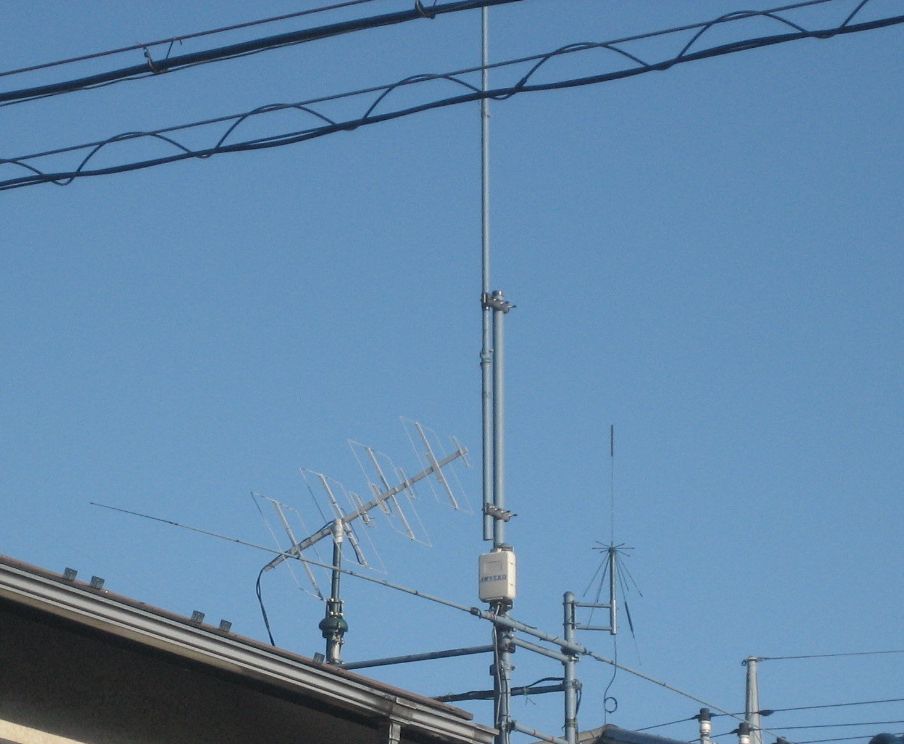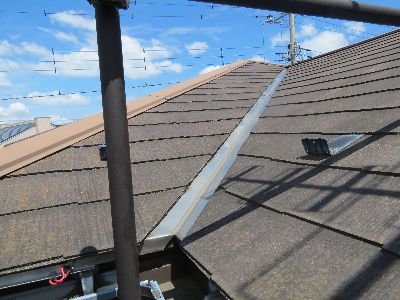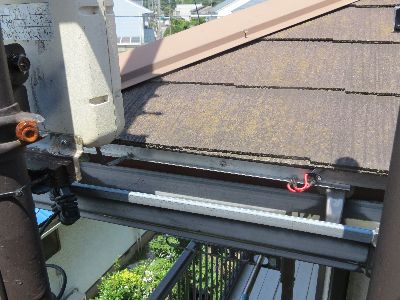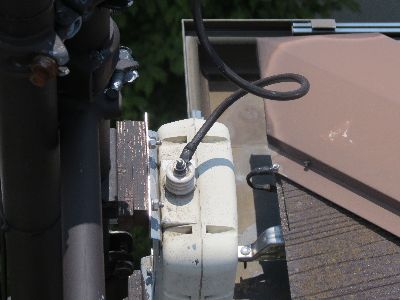JK1SXR
=>Japanese
Return to "A. Home"
7.
18 MHz
Inv. delta loop
6.
18 MHz
Delta Zepp
5.
Ladder-line-fed
HF GP
4.
Ladder-line-fed HF
horizontal wire ANT
3.
14/18/21 MHz
Vertical ANT>
2.
Old HF ANT remake
1.
Old HF ANT
Return to "A. Home"
7.
18 MHz
Inv. delta loop
6.
18 MHz
Delta Zepp
5.
Ladder-line-fed
HF GP
4.
Ladder-line-fed HF
horizontal wire ANT
3.
14/18/21 MHz
Vertical ANT>
2.
Old HF ANT remake
1.
Old HF ANT
B1 HF antenna
1.Old HF main antenna = Vertical + AH-4 (previous use)
1) 7-m vertical element + Elevated radials + AH-4


Automatic antenna tuner, AH-4, is an excellent equipment, a monster. For nearly 20 years, it has been weather-beaten midair at my place, and still works. Hats off! Meanwhile I myself has retired from works earlier than AH-4!
My HF antennas have been mainly of a vertical type since I started ham operations. After obtaining AH-4, I had used a typical vertical antenna using AH-4, with a 4 m long element and 3 radials working also as stay wires slanting to the ground. Though the element length was so short, AH-4 tuned to each of the 3.5/7/10 MHz, and the performance was stisfactory. The only drawback was the slanting 3 radials, which looked too conspicuous.
As a horizontal radial seemed preferable compaerd with the slanting ones, the antnna was remade to the inverted T type, by lowering the feeding point and adopting 2 horizontal radials, as in the picture. The vertical element was about 7 meters long. Its lower 3.5-m section consisted of two aluminum pipes, each with a diameter of 38 mm and 32 mm. The upper section was 3.5-m FRP fishing rod wound by stainless-steel stranded wire of 0.5-mm diameter. The radials were made by two 3.5-m FRP fishing rods, each of which wound by 7-m long stranded stainless-steel wire of 0.5 mm. The 2 rods were placed horizontally on a straight line.
Some book says the more the number of radials, the better the preformance, recommending more than 10. This is outrageous. It could be surely so, electrically. Our operation, however, is not for a professional station. We have to consider the neighbours' eyes, otherwise we cannot continue the ham operations. When the frequency and time are properly chosen, this simple antenna with 2 radials can send CW signals to the opposite side of the globe.
2) Roof grounding H24/2012 summer
 For a substitue of the horizontal radials, I tried another 2 types, 2 radials hidden inside troughs at roof ends and several radials thrown onto the roof. Also grounding to a steel pipe of an antenna sustaining base was tried. The former two looked good, but AH-4 tuning sometimes became unstable. These were all abandoned.
For a substitue of the horizontal radials, I tried another 2 types, 2 radials hidden inside troughs at roof ends and several radials thrown onto the roof. Also grounding to a steel pipe of an antenna sustaining base was tried. The former two looked good, but AH-4 tuning sometimes became unstable. These were all abandoned.One day, I noticed a steel plate lying along a valley of the roof. As in the picture, a rather thick stainless-steel plate stretches to the roof top, about 4 m long. The width could be 0.5 m. Though the space is less than that of a minicar roof, it could possibly work as a ground connected to the whole roof, electrostatically. And the steel plate was connected to the AH-4 instead of the horizontal radials. The result unexpectedly looked good.
(This idea stems from my previous experiences when I used a 7 MHz mobile antenna on Jimny minicar. High altitude and open space were undoubtedly necessay conditions for good contacts, but seemed not sufficiient. The influence by the ground just beneath the car seemed very great. Although we think we take the earthing to the car body, in reality, it might be that we utilize the ground earth through the electrostatic capacity to the ground just beneath. The HF world seems completely different from those of the direct current or commercial ferquencies.)


Expecting this would work, the horizontal radials were removed, both the element and AH-4 were lowered to the roof end for grounding to the steel plate, and trial opeartions were made. The result was excellent. The AH-4 tuning became fast and stable far more than before. Further, the static discharge noises, possibly from the antenna itself and nearby floating metal objects, which were noticiable before, depending on weather conditions, becmae not apprecialble. Later I noticed that the roof ridges are also covered with steel plates and these were also connected in parallel.
No radials resulted in a simple appearance, and the antennas's self-standing capability increased considerably. It was in summer and soon the first typhoon came. I dared to leave the antenna as it was, to see how it behaves. There was no problem at all. Although its upper section swayed greatly, it is a slender fishing rod and gave no anxiety to us. This no anxiety is important more than anything. Before, I lowered and raised antennas whenever typhoons came. This became unnecessary. The antenna has endured the subsequent typhoons and the strong winds of this spring.
Compaerd to the initial antenna, the feed point became lower by nearly 2 meters. The antenna, however, does not show any degradation in its performacne. Its appearance became simple. It got very strong to both noises and winds. AH-4 became to work steadfastly. All became fine.
H23/2011 yearend
Copyright © 2013 JK1SXR/abemasa. All Rights reserved.